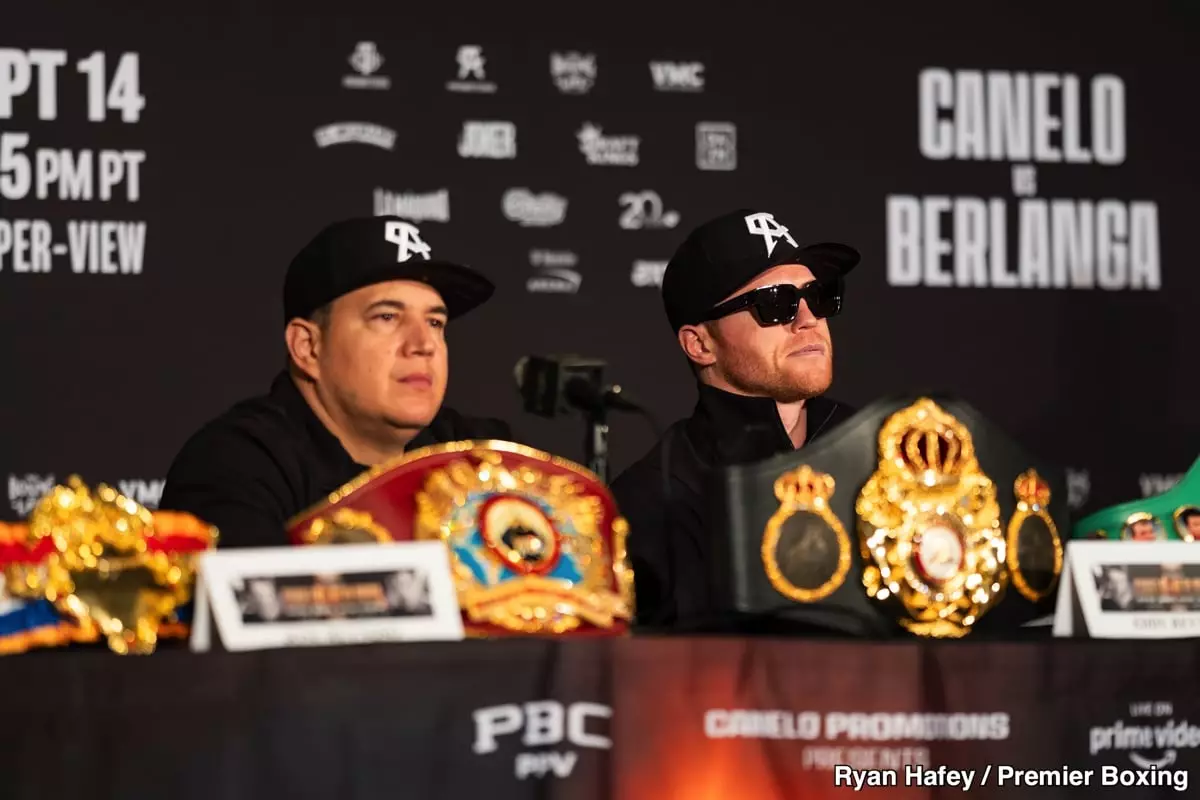In the world of boxing, promotions play a significant role in shaping the narrative around potential fights, often inflating the perceived value of matchups to maximize commercial benefits. Recently, Eddie Hearn, the well-known promoter from Matchroom Boxing, suggested that a potential clash between Anthony Joshua and Tyson Fury represents the pinnacle of commercial appeal in the sport. This article delves into the validity of that claim, contrasting it with differing sentiments from both American and British boxing audiences and exploring the practical realities of contemporary boxing draws.
Hearn’s assertion may falter under scrutiny when faced with the realities presented by fans and analysts alike. Anthony Joshua and Tyson Fury, both once heavyweight titans, have recently shown signs of decline. Their performance in the ring has left many questioning whether a fight between them would capture the current zeitgeist or merely recycle interest that has already waned. Critics argue that the electric charge surrounding a Joshua-Fury bout, which at one time promised to be a historic encounter, has significantly diminished.
In today’s landscape, boxing aficionados lament the lack of remarkable victories that either fighter has secured over proven opponents in recent years. Both Joshua and Fury have walked away from fights against top-tier talent without solidifying their legacies, which raises doubt regarding their ability to attract audiences today. For U.S. fans, the lack of a compelling narrative diminishes any draw that this matchup may have had, regardless of discounted pay-per-view offers.
Contrasting this, the boxing community’s focus has shifted to Canelo Alvarez and Terence Crawford, suggesting that a bout between these two fighters represents the true commercial blockbuster. Alvarez, with an impressive resume (62 wins, 2 losses, 2 draws), and Crawford (41 wins, no losses) epitomize the qualities of modern superstars—activity, skill, and a consistent presence at the top level of the sport.
However, a match between them remains elusive, primarily due to Alvarez’s elevated financial expectations. As a fighter who has garnered substantial wealth and acclaim, Canelo’s market demands overshadow the financial limitations of traditional promoters. The assertion that Crawford can attract fans is notable, as his career (spanning 17 years and four division titles) has earned him a reputation that excites fans even if pay-per-view sales have not consistently reflected that star power.
It is imperative to understand Hearn’s motivations when championing a Joshua-Fury matchup. As the promoter of Joshua, Hearn stands to profit tremendously if the fight materializes. His claim that this encounter would be the most commercially viable fails to account for the changing tides of audience interest. The reality is that while Hearn is promoting a product—Joshua’s return to prominence—fans are gravitating towards fighters who consistently deliver thrilling bouts and compelling storylines that resonate beyond pay-per-view figures.
Moreover, comparisons to past memorable fights highlight a crucial distinction: boxing narratives are no longer reliant on mere name recognition. The fans today yearn for excitement, not just legacy. In this respect, the highly anticipated Alvarez-Crawford fight encapsulates a modern narrative that commands attention simply by the sheer talent on display. The desire for authenticity in boxing draws a stark contrast to the “what once was” allure of Joshua and Fury—a duo whose legacies are increasingly clouded by underwhelming performances.
As the landscape of boxing continues to evolve, promoters must adapt their strategies to reflect the shifting preferences of fans. The idea of Joshua vs. Fury being the commercial apex is a reflection of a bygone era, overshadowed by the undeniable traction that fighters like Alvarez and Crawford are generating. A matchup between them not only possesses the potential for high revenue, but it also serves to unite fans around the prospect of an electric battle grounded in authenticity and competitive spirit.
Ultimately, it is essential for promoters, fans, and fighters alike to acknowledge the contemporary dynamics at play in the boxing world. As enthusiasm for fights pivots towards those that exude current relevance, the pathway to success increasingly depends on engaging audiences with matchups that invoke energy, excitement, and a clear narrative, rather than relying solely on historical significance.

